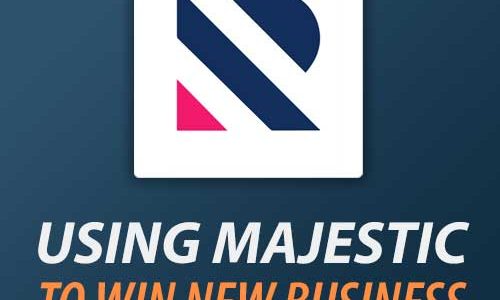
We’ve invited Oliver Sissons, SEO Director at Reboot Online to share how they use Majestic.
Since being founded in 2006, Reboot Online has won pitches for and worked with some huge brands (brands like Just Eat, Money.co.uk, and Confused.com). This article will look at how we are using Majestic data to win more business and deliver more effective SEO, link building, and digital PR campaigns.
What is Majestic & What Does it Do?
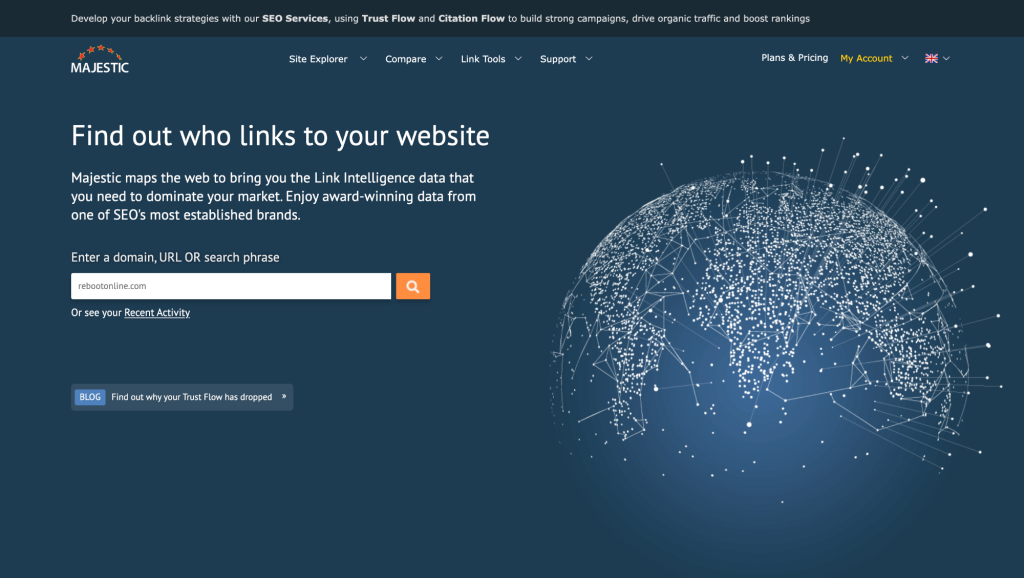
If you’re reading this, chances are that you already know what Majestic is and what it is about. Just in case you’ve found your way here through one of our social posts and/or stumbled upon it through some other channel though, we’ll start with a quick overview of the Majestic suite of tools.
The company’s About Us page explains that Majestic is “a pioneer in surveying and mapping the world wide web”.
At Reboot, we would describe it through our experimental and data-driven lens as a partner for anyone looking to make sense of a website’s organic visibility and SEO performance.
In layman’s terms, Majestic crawls and indexes an astounding number of webpages and stores useful data about the way in which various websites are linking to each other. Majestic data is invaluable for SEOs and online marketers like us who are looking to increase the SEO visibility of their websites and/or their clients’ websites.
The number of pages discovered and crawled by Majestic increases every second, and the counter found in this websites footer will give you an idea of the scale that Majestic is working to:

At the time of writing this article, the counter showed that Majestic had historically crawled a staggering four trillion, three hundred ninety-six billion, seven hundred forty-eight million, three hundred ninety-eight thousand and forty-five historic URLs.
The size and scale of the Majestic link index is why it is so useful for our SEO agency, especially since we are working on websites of all sizes and in all different industries.
Put simply, when we want to understand the connections between websites in an industry and get insights into why a given website is ranking at the top of the organic search results, Majestic provides us with an affordable and intuitive way of finding that out.
More Than Just an SEO Analysis Tool
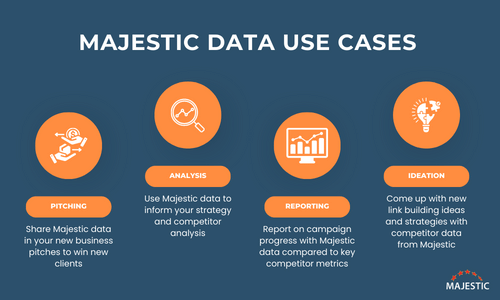
There is no denying that Majestic pays for itself, even when only being applied to our day-to-day SEO analysis. However, having observed over the last 10 years how countless people in the SEO industry are using this powerful tool, I’m certain that most SEOs could be deriving even more value from it than they currently are.
Once we started looking at Majestic as more than just an SEO tool, but also as a sales and business development one, we better understood how to use it to win more clients and grow our agency’s bottom line.
Using Majestic in New Business Pitching
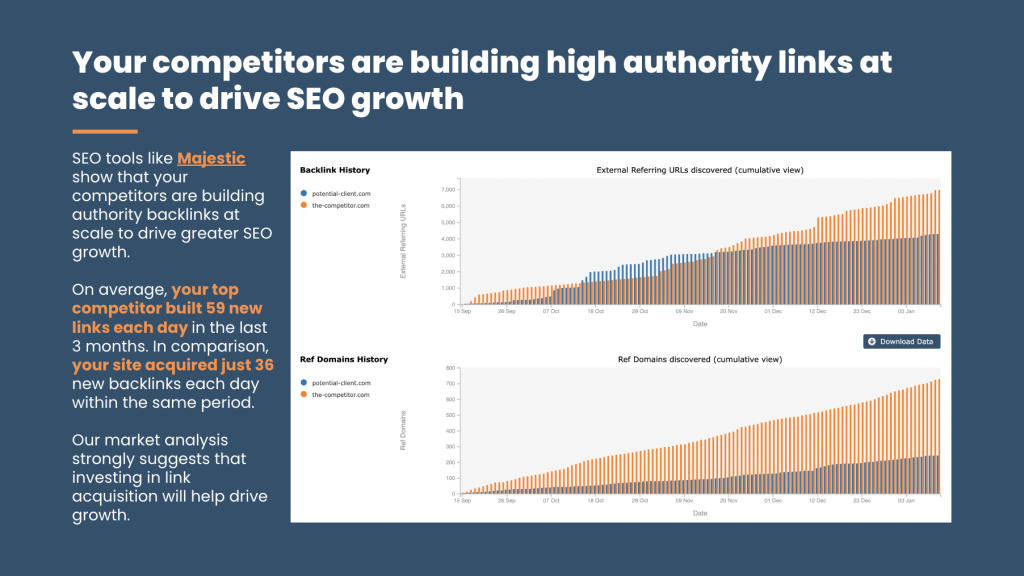
Much of our SEO agency’s growth and client wins can be attributed to the way in which we have leveraged data and SEO tools to sell and deliver our campaign strategies. Not every tool is created equal though, and few tools have proved to be as useful and insightful as Majestic.
Market Analysis
Any good pitch starts with detailed market analysis.
Before we put forward our proposed SEO strategy, we first need to fully understand the potential client’s current organic positioning (and how this compares to the key competitors in their space!). Traffic stats and keyword rankings are great for this, but they don’t tell us the whole story or offer a complete picture.
To more accurately plan the best SEO strategy, and to convince a potential client that our proposed strategy is the right one for them and their brand, we also need to look under the hood of their website and the websites of their key competitors. This is where a tool like Majestic comes in.
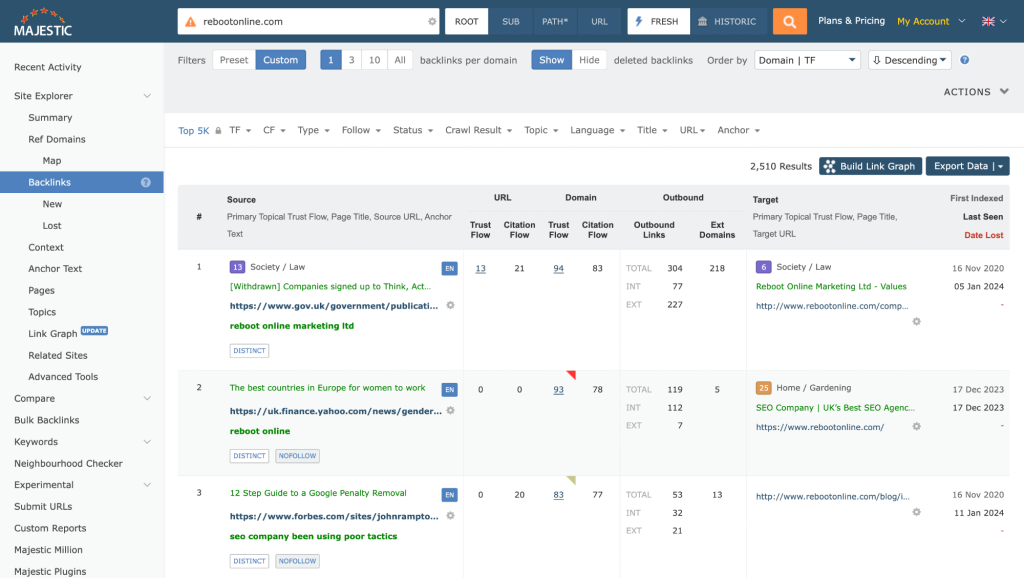
The ability to identify and share the actual backlinks that are contributing to a competitor’s organic visibility goes a long way in helping us explain to a potential client why they need our proposed SEO strategy and/or link building campaign to drive growth.
At Reboot, we are pulling valuable data from Majestic to provide detailed comparisons between potential clients and their key competitors.
The tool allows us to look at and show things like:
- Existing Trust Flow and Citation Flow gaps
- Gaps in total backlink and referring domain counts
- Differences and changes in link velocity (positive and negative) over time
- How the topical coverage of the links pointing to a clients website differs from their top competitors (and what this means for their strategy going forwards)
- Useful third-party data to quantify the quality of the backlinks that we have built for other clients in our case studies
Explaining to potential clients why they aren’t effectively competing with the other brands in their industry is one thing, showing them real examples of what competitors are doing to drive growth is another.
Data Visualisation
Once we have collected data about our potential new client and their competitors, we always want to share this with them in a digestible and easy-to-understand format.
Majestic makes it easy for us to intuitively show the findings of our market analysis with the many data visualisations that they provide as-standard within our account.
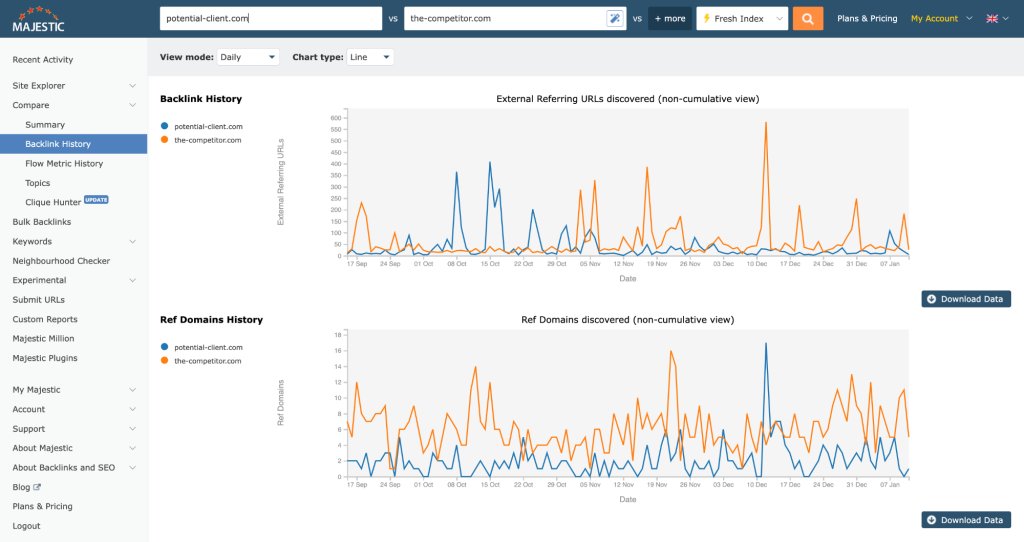
Not only do we create comparison tables using Majestic data to include in our pitch decks, but we will also use things like the Cumulative Backlink History chart feature and the anchor text word clouds to offer an instant insight into how the potential clients off-site SEO performance differs to their key competitors.

A picture speaks a thousand words, and including such visuals in our sales and marketing materials is a sure fire way to make our pitch more memorable and impactful.
Using Majestic To Win Upsell & Cross-Sell Opportunities
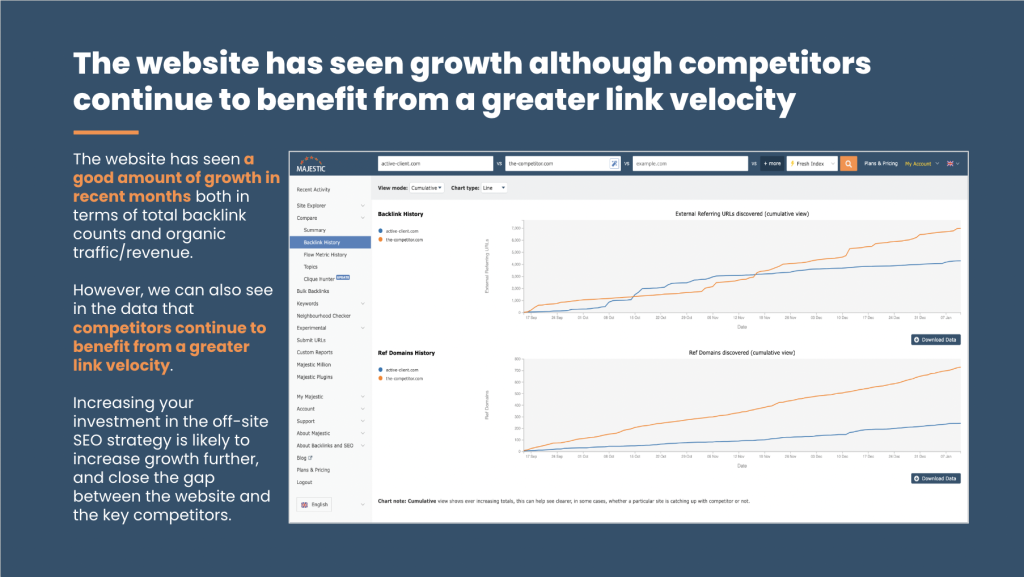
Even once we have won the pitch and onboarded the client, we then find that Majestic is useful in keeping clients up-to-date on campaign progress whilst helping us win more upsell and cross-sell opportunities.
One of the most common ways that we use Majestic in our reporting is by keeping track of increases in things like Trust Flow, Citation Flow and referring domain counts.
Gains in these metrics over time offer real data to support the claim that the backlinks that we are earning for our clients’ websites are being found and noticed by search engines.
On the flip side, if/when we have started seeing momentum on the off-site SEO side but can also see that competitors are investing more heavily in their link acquisition campaigns, this is incredibly valuable data to have in order to pitch for an upsell or cross-sell opportunity.

In cases like this, we will use Majestic’s Cumulative Backlink History charts, as well as real examples of the kinds of links that our clients’ competitors are building and benefiting from, to help demonstrate why an increased investment is justified.
Once we started approaching our client relationships in this way, we found that we were able to unlock larger budgets and secure investment over a longer period of time. This is because we are providing real justifications as to why such an investment is necessary.
Using Majestic To Deliver Effective SEO Campaigns

Even though the main focus of this article is on how we’re using Majestic to win new business, I did want to quickly touch on how Majestic is proving invaluable in helping us deliver effective SEO campaigns for our clients.
Building Link Targets & Seed Lists
To start, we will use Majestic to build a seed list of outreach targets. High trust and high quality websites that we can see that our clients top competitors already have links from.

These are usually some of the best links to try and replicate, and Majestic makes finding them quick and easy; freeing up our time to focus on creating the kind of content that will actually help us land links from those websites and publications.
Prioritising Campaigns & Link Targets
Next, we use Majestic to help us prioritise our campaigns and channel our focus towards the link targets which are likely to drive the most impact.

We dive into the details and look at our client’s competitors at the individual link level. This way, we can get an insight into which campaign types (e.g. survey-led campaigns or more data-heavy index style pieces) will be most likely to help us earn links from those same websites.
Campaign Ideation & Brainstorming
Another way that we are using Majestic to deliver effective link building and digital PR campaigns is by finding previous successful campaigns run by other brands in the spaces that we are looking to earn links in.
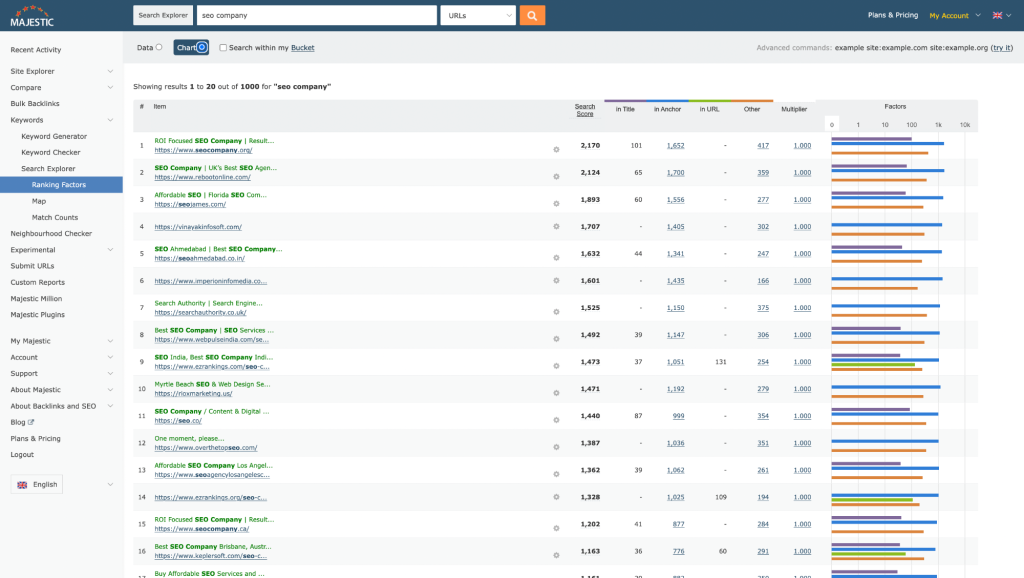
The keyword and search functionality offered by Majestic allows us to identify other websites who have acquired links with anchor texts relevant to the keywords that our clients are looking to target.
This functionality allows for extensive reverse engineering and helps us understand what journalists in a given industry are writing about, who they are linking to, and better predict which ideas and stories they may be more likely to write about and link to in the future.
Conclusion (Get a Majestic Subscription…)
To summarise, Majestic is a tool which is helping our team not only plan and implement effective SEO and digital PR campaigns, but also to win new business in the first place and to grow client accounts.
We have been fortunate enough to work with some of the biggest brands online in recent years, and a large part of that is our robust pitch analysis which is powered by tools like Majestic.
As we head into 2024, the whole Reboot Online team will continue to use Majestic to inform our campaign strategies and to meet our business goals and objectives. We wish you luck in doing the same!
Have a story similar to this? We want to share successful white-hat digital PR campaigns told with Majestic Data. Reach out to us at case-studies@majestic.com with a short pitch for more details.







Sorry, but your post is against our blog guidelines.
January 24, 2024 at 11:57 amSorry, but your post is against our blog guidelines.
February 1, 2024 at 4:08 pm